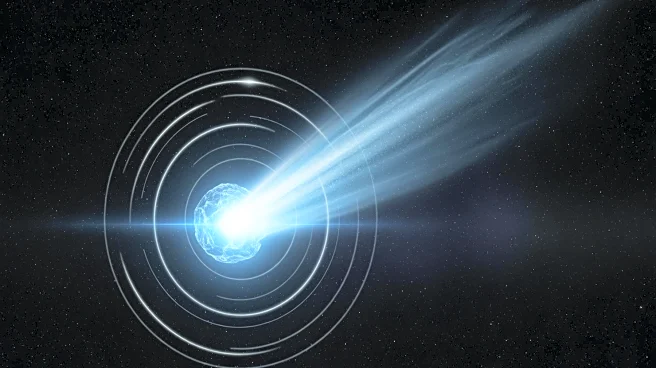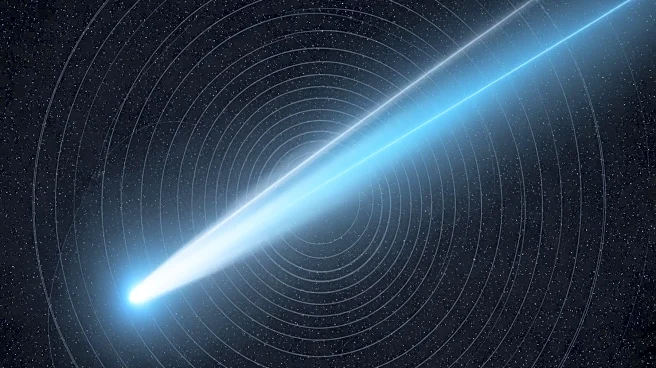What's Happening?
Interstellar comet 3I/ATLAS has survived its close approach to the Sun, developed a striking ion tail, and emitted its first detected radio signal. The comet's orbit has been precisely determined with
assistance from a spacecraft at Mars. Despite online speculation about its potential as an 'alien probe,' new data strongly refutes these claims. The comet, discovered on July 1, 2025, by NASA's ATLAS system, is on a hyperbolic trajectory, indicating it will not return. It passed closest to the Sun in late October 2025 and will be nearest to Earth on December 19, 2025, posing no impact risk. The comet is currently located in the constellation Virgo, about 2.1 AU from Earth, and is visible only through telescopes. Its unusual chemistry and color suggest it could be older than the solar system, possibly several billion years old.
Why It's Important?
The confirmation of 3I/ATLAS as a natural comet rather than an alien probe is significant for scientific understanding and public perception. The comet's interstellar origin provides a rare opportunity to study material from outside our solar system, offering insights into the formation and evolution of planetary systems. The detection of radio signals from hydroxyl radicals in the comet's coma confirms typical cometary activity, reinforcing its natural status. This event highlights the importance of distinguishing between scientific evidence and speculative theories, ensuring accurate public communication. The comet's study could advance knowledge in planetary defense and interstellar object tracking, benefiting future space exploration and research.
What's Next?
NASA and other space agencies will continue to monitor 3I/ATLAS as it moves away from the Sun. Observations from the James Webb Space Telescope in December will further analyze its composition. ESA's JUICE spacecraft is also observing the comet, with data expected in early 2026. Ground-based telescopes and amateur astronomers will track the comet into spring 2026, maximizing observational opportunities before it fades. Upcoming HiRISE images from the Mars Reconnaissance Orbiter will provide detailed views of the comet's jets and anti-tail, enhancing understanding of its physical properties. These efforts will contribute to the broader study of interstellar comets and their implications for planetary science.
Beyond the Headlines
The study of 3I/ATLAS offers deeper insights into the nature of interstellar objects and their potential impact on scientific theories about the universe's formation. The comet's unusual composition and trajectory challenge existing models, prompting reevaluation of assumptions about cometary origins and behavior. The event underscores the importance of international collaboration in space research, as agencies like NASA and ESA work together to gather and analyze data. This collaboration enhances global scientific capabilities and fosters innovation in space exploration technologies. The comet's journey through the solar system serves as a reminder of the vastness and complexity of the universe, inspiring curiosity and further scientific inquiry.











